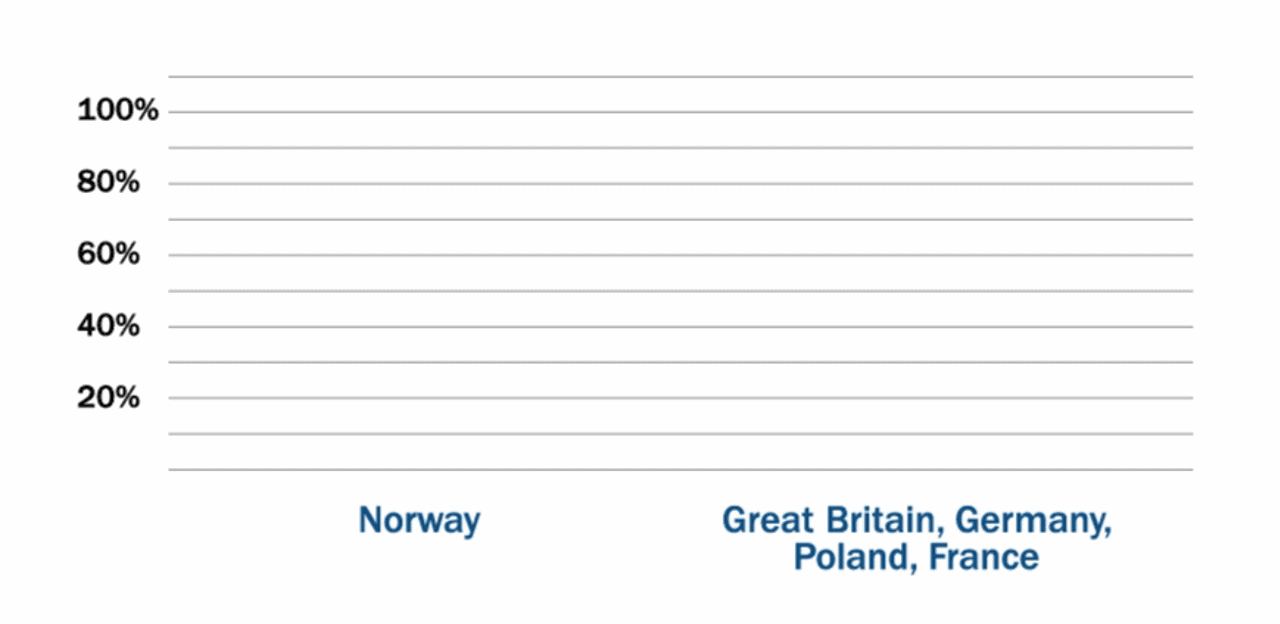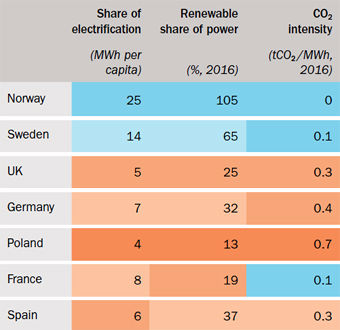Countries

Energy production: Hydropower has a unique value
Sun and wind are the renewable energy sources growing at the fastest rate, but they depend on the sun shining and the wind blowing. Flexible hydropower is the only renewable energy source that can produce on demand.

Aslak Mæland is Vice President Asset Ownership Nordics. This is a part of Statkraft's business area Markets.
Whereas wind power is only generated when the wind blows, and solar power only when the sun shines, water can be stored and used for power generation when demand is greatest and therefore prices are highest.
Sunshine on a clear day generates the most power from a solar cell. Wind power works best on the windiest days. But without any way to store this energy, the wind and sun are not very flexible power sources. This means that they may be in full production when market demand and prices are low, and have low capacity when demand and prices are high.
The market needs more flexible solutions, both to satisfy the power needs of customers and to ensure a power system 100 per cent based on renewable energy.
"Having access to large amounts of flexible hydropower has many advantages."
Flexible solutions
In the future, solar and wind energy will probably be stored in large batteries, or used to produce hydrogen that can be stored and used for energy production as needed. In today's market, the variable power generation from renewable sources like sun and wind must go hand in hand with conventional power generation, which in many markets means oil, gas, coal or nuclear power.
Variable power sources like wind and sun are therefore not able to completely replace fossil fuel sources. Only flexible hydropower has the key advantage of being both renewable and flexible.
"Having access to large amounts of flexible hydropower has many advantages," says Aslak Mæland, production planner in Statkraft.
"The reservoirs provide us with great flexibility, which in turn provide great power reserves. This flexibility has major socioeconomic value for the power companies. It contributes to safety of supply and less fluctuation in power prices."
Weather and hydropower
At the same time, hydropower is to some extent dependent on the weather and the physical constraints of the reservoirs.
"For example, small reservoirs are usually full in early summer after a period of intense snow melting. Although it would be sensible to 'save' the water for the fall and winter when demand is higher, there is the risk of reservoirs overflowing in the event of a wet summer or fall," explains Mæland.
"So we often need to produce electricity when we have a lot of water, because even the best meteorologist cannot forecast how much snow will come in winter or rain in summer. This means that even flexible hydropower carries some uncertainty in power generation during the course of a year."
Varying needs for flexibility
There is no doubt that a country like Norway already has a great advantage on the road to the low-emissions society compared with other European countries.

Norway's share of renewable energy is 106 per cent (2015 figures), meaning a power surplus, and most of it is in the form of flexible hydropower.
Countries such as the UK, Germany, Poland and France have a renewable share of 13‒31 per cent. In addition, the renewable sources in these countries consist mainly of variable wind and solar power, so they will have a great need to find new flexible solutions to reach their emission targets. Flexibility over weeks and months can only be solved today with power from gas, coal, oil or nuclear sources.
In the future, better digital solutions and smarter systems, hydrogen storage, and better grids and transmission cables will help improve flexibility solutions for the entire European market. In the meantime, hydropower is the clear winner.
Source: Statkraft's Low Emissions Scenario 2018
Comparing countries

The starting point and challenges are unique to each of the European countries. Renewable share of power produced as a percentage of domestic consumption.
Source: Eurostat, EEA





















